Wines of Bordeaux, of Saint-Julien
-
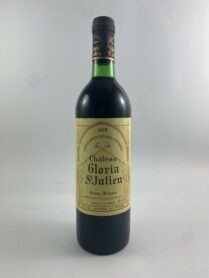
Château Gloria 1979
€58.80Saint-Julien | Red | 0,75 L
-

Château Beychevelle 1990
€117.60 – €130.80Saint-Julien | Red | 0,75 L
-
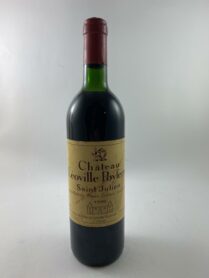
Château Léoville Poyferré 1989
€178.80Saint-Julien | Red | 0,75 L
-
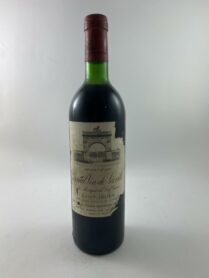
Château Léoville Las Cases 1981
€186.00Saint-Julien | Red | 0,75 L
-
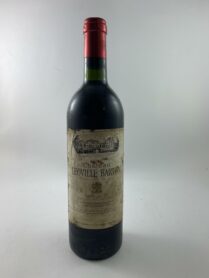
Château Léoville Barton 1980
€68.40Saint-Julien | Red | 0,75 L
-
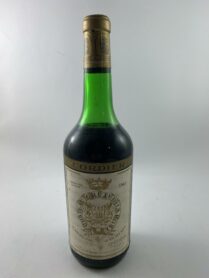
Château Gruaud Larose 1964
€276.00Saint-Julien | Red | 0,75 L
-
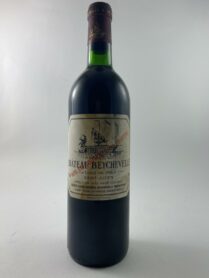
Château Beychevelle 1986
€132.00Saint-Julien | Red | 0,75 L
-

Château Langoa Barton 1989
€114.00Saint-Julien | Red | 0,75 L
-

Clos du Marquis 2002
€48.00Saint-Julien | Red | 0,75 L
-
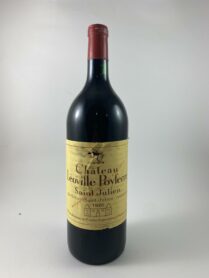
Château Léoville Poyferré 1981
€298.80Saint-Julien | Red | 1,5 L
Saint-Julien is one of the eight prestigious appellations of the Médoc. It resonates throughout the world where its Grands Crus and exceptional vintages carry high the values of excellence of Bordeaux vineyards. Discover the assertive personality of the classified wines of the châteaux on the left bank of the Garonne.
Bordeaux wines from Saint-Julien appellation
Saint-Julien is a small commune in the southwest of France renowned for its Appellation d’Origine Contrôlée (decree of November 14, 1936) and its AOP. Its lands (910 ha, 6% of the Medoc vineyard) are located between the famous appellations of Pauillac and Margaux. The vines in the north of Saint-Julien are based on those of Château Latour.
Only wines harvested in the commune of Saint-Julien-Beychevelle as well as certain parcels in Cussac, Saint-Laurent, Bécamil and La Lande de Beaumont are entitled to the Saint-Julien AOC. Excluded are all the parcels of these same territories located on modern alluvium, sands or on impermeable subsoils. To qualify for the AOC, the wines must be made from Cabernet Sauvignon, Cabernet Franc, Carmenère, Merlot, Malbec and/or Petit Verdot grapes and must comply with strict specifications.
Saint-Julien, which has been developing since the 17th century, is sometimes forgotten since it does not produce a first growth listed in the Bordeaux classification of 1855. The appellationhas 11 Crus classés (three quarters of its production), the largest concentration of crus classés in the Médoc:
5 Second Growths: Châteaux Léoville Las Cases, Léoville Poyferré, Léoville Barton, Gruaud Larose and Ducru-Beaucaillou,
2 Third Growths: Langoa Barton and Lagrange.
4 Fourth Growths: Châteaux Beychevelle, Branaire Ducru, Talbot and Saint Pierre.
Its reputation is based on the elegance of its wines and on the stability of its productions. The homogeneity of the harvests is linked to its unique soil (Graves Garonnaises, clayey limestone subsoil) and the temperate oceanic climate.
The Saint-Julien style is recognizable by its dark bellerobe, fine, velvety tannins and smooth, harmonious flavors. The different vintages have body, a beautiful richness of sap and a delicate perfume. Their intense and complex aromas reveal various notes (blueberry, blackcurrant, blackberry, prune, tobacco, licorice…).
Saint-Julien : wines classified Grand Cru 1855
Each estate cultivates its own specificities according to its grape varieties and production methods. From the harvest to the conservation of the bottles in the cellars, each element influences the specificities of the vintages. Most of the vineyards have the High Environmental Value Certification (HVE level 3).
Château Beychevelle (92 ha). From the cellars of the 17th century “Versailles of the Médoc” comes a graceful, complex wine with a great aromatic richness dominated by blackcurrant. Grape varieties: Cabernet Sauvignon (52%), Merlot (40%), Petit Verdot (3%), Cabernet Franc (5%). Second wine: Amiral de Beychevelle.
Château Branaire-Ducru (60 ha). The wine history of the estate began in 1680. Its Grand Vin, a Cabernet Sauvignon blend (65%) expresses a complex but consistent character with a strong presence of fruit. The estate is located on soil dominated by Pyrenean Graves and is also composed of Merlot (28%), Petit Verdot (4%) and Cabernet Franc (3%). Second wine: Duluc de Branaire-Ducru.
Château Ducru-Beaucaillou (90 ha). The history of the castle begins in the 13th century, but the estate is revealed after the Revolution. On the tasting side, this refined, balanced and complex second growth rivals the first. It is characterized by a deep texture, elegant tannins, remarkable length and freshness. Grape varieties: Cabernet Sauvignon (75%), Merlot (25%), Petit Verdot (5%). In addition to the HVE label, the estate is certified EMS ISO 14001. Other wines: La Croix Ducru-Beaucaillou and Le Petit Ducru de Ducru-Beaucaillou.
Château Gruaud Larose (8 ha). The history of the Château began in 1725 with the Abbé Gruaud. The vineyard planted on Graves Garonnaises is in conversion Bio. This Grand Vin with very fine tannins is characterized by a dense and complex attack followed by an elegant and harmonious middle palate. Grape varieties: Cabernet Sauvignon (60%), Merlot (30%), Petit Verdot (3%), Cabernet Franc (7%). Second wine: Sarget de Gruaud Larose.
Château Lagrange (118 ha). This estate houses an 18th century castle with a Tuscan tower. From the historical cellars come wonderful silky vintages characterized by an elegance and an exceptional length in mouth. Grape varieties: Cabernet Sauvignon (67%), Merlot (28%), Petit Verdot (5%). Second wine: Les Fiefs de Lagrange.
Château Langoa Barton (20 ha). The estate and its 18th century castle have belonged to the Barton family since 1821. If this wine is vinified in the same cellar as the Château Léoville Barton, its taste is more rounded. It draws its flavors from a more clayey soil and a blend containing more Merlot. Grape varieties: Cabernet Sauvignon (57%), Merlot (34%), Cabernet Franc (9%).
Château Léoville Barton (50 ha). This vintage belongs to the same family as the Langoa, which has owned it since 1758. This Grand Vin is elegant, strong, deep and its ageing potential is very interesting. Its complex bouquet is well balanced (red fruits, cherry, flowers…). Its finish is superb. Grape varieties: Cabernet Sauvignon (74%), Merlot (23%), Cabernet Franc (3%). Second wine: La Réserve de Léoville Barton.
Château Léoville Poyferré (80 ha). The vineyard, which practices traditional plot-based vinification, is located to the north of the appellation. The Grand Vin with its elegant tannins comes from the Léoville estate bought in 1920. Its complex aromas (red fruits, Zan, vanilla) delicately wooded reveal themselves greedy in mouth. Grape varieties: Cabernet Sauvignon (61%), Merlot (27%), Petit Verdot (8%), Cabernet Franc (4%). Second wine: Pavillon de Léoville Poyferré.
Château Talbot (110 ha). The estate acquired in 1917 by Désiré Cordier is still in the family. The vineyard overlooking the Gironde estuary produces an elegant, fine wine with silky tannins. Grape varieties: Cabernet Sauvignon (68%), Merlot (28%), Petit Verdot (4%). Second wine: Connétable Talbot.
Grand Vin de Léoville du Marquis de Las Cases (98 ha). The Domaine has been established since 1604 facing the river and produces a wine with exceptional aromatic richness. This Grand Vin with its deep and complex expression is highly sought after. Grape varieties: Cabernet Sauvignon (66%), Merlot (24%), Cabernet Franc (10%). Second wine: Le Petit Lion du Marquis de Las Cases.
Château Saint-Pierre (17 ha). The winery is one of the oldest in the Médoc (16th century) and the smallest. The tasting of its Grand Vin with its almost black color reveals a classic Saint-Julien, powerful and dense. Its fine and elegant tannic structure releases aromas of dark fruits. Grape varieties: Cabernet Sauvignon (75%), Merlot (15%). Second wine : Esprit de Saint-Pierre.
Bordeaux wines, Saint Julien not classified
Other non-classified wines are produced in the appellation such as Châteaux Du Glana, Finegrave, Gloria, La Bridane, la Fleur Lauga, Lalande, Lalande-Borie, Moulin de la Rose, Teynac, Clos du Marquis or Domaine Castaing. Some are attached to estates classified as Grand Cru such as Chateau Gloria (Beychevelle) which is part of the Chateau Saint-Pierre estate.
Bordeaux wine Saint-Julien, the best wines
Wines of The Médoc is home to more than a thousand châteaux, each of which has its own surprises in store. Saint-Julien is surrounded by seven other prestigious appellations:
Two sub-regions, Médoc and Haut-Médoc
Five communes like Saint-Julien. Saint-Estèphe, Pauillac, Moulis-en-Médoc, Listrac-Médoc et Margaux.
These appellations share more than 16,000 hectares of exceptional land. If you have not already done so, go and discover the wines of Saint-Julien. Good tasting. Express Wine offers a wide range of Bordeaux wines if you wish to discover a wine from another appellation.
Saint-Julien is one of the eight prestigious appellations of the Médoc. It resonates throughout the world where its Grands Crus and exceptional vintages carry high the values of excellence of Bordeaux vineyards. Discover the assertive personality of the classified wines of the châteaux on the left bank of the Garonne.
